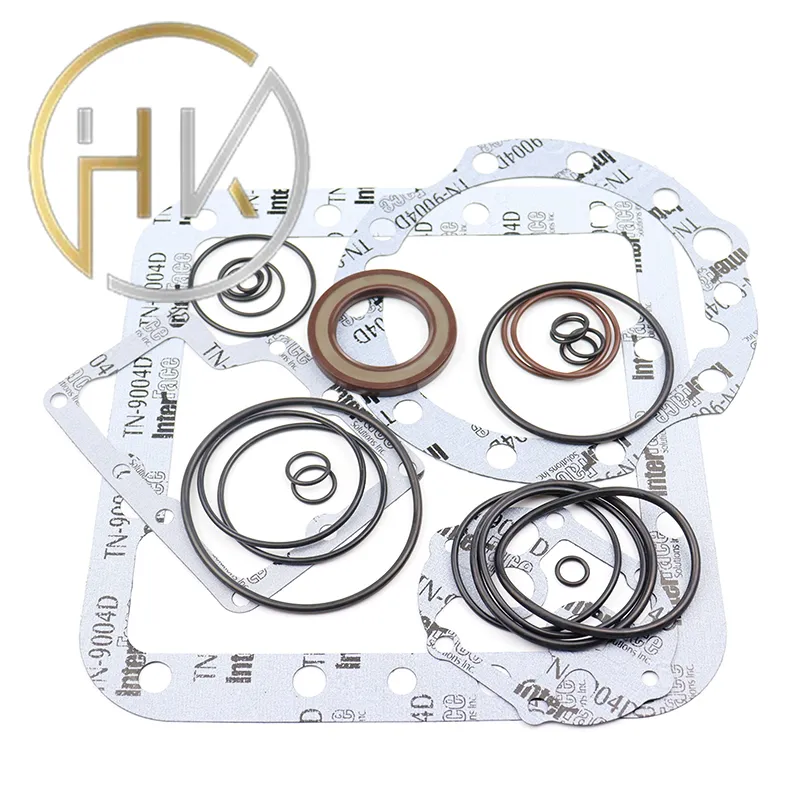Nov . 06, 2024 05:45 Back to list
Understanding Gearbox Seals for Enhanced Performance and Reliability in Machinery Applications
Understanding Gearbox Seals Importance, Types, and Maintenance
Gearbox seals play a crucial role in the functionality and longevity of mechanical systems. These components are designed to prevent the leakage of lubricants and protect the internal mechanisms of gearboxes from contamination by debris, water, and other environmental factors. This article aims to delve into the significance of gearbox seals, the various types available in the market, and maintenance tips to ensure their optimal performance.
The Importance of Gearbox Seals
Gearboxes are vital components in many machinery applications, converting input energy into mechanical output while modulating torque and speed. In this process, lubrication is essential to reduce friction and heat generation. Gearbox seals are responsible for ensuring that this lubricant remains contained within the gearbox assembly. Without effective seals, oil leaks can lead to significant operational issues, including
1. Increased Wear and Tear Lack of lubrication due to leaks can cause gears to grind against each other, leading to premature wear and potential failure. 2. Contaminant Ingress In open environments, debris, water, and other harmful substances can breach the gearbox. Seals protect internal components from these contaminants. 3. Operational Downtime Frequent leaks can necessitate repairs or complete replacements, leading to costly downtime for machinery and equipment. 4. Environmental Concerns Oil leaks can have negative impacts on the environment, necessitating proper containment to prevent spills.
Types of Gearbox Seals
The market offers a variety of gearbox seals, each tailored for specific applications and requirements. Some of the common types include
1. Lip Seals These comprise a flexible lip that contacts the shaft, forming a barrier to prevent lubricant leakage. They are cost-effective and suitable for various speeds and pressures. 2. O-Ring Seals Shaped like a circular ring, O-rings are used to create a tight seal between two surfaces. They are versatile and work well in static and dynamic applications.
3. Mechanical Seals These are more complex and are often used in applications requiring high pressure and temperature resistance. Mechanical seals have fewer wear and tear issues but can be more expensive and complicated to install.
4. U-Cups These seals have a “U” shape and provide a dynamic sealing solution for hydraulic applications, effectively preventing fluid leakage under high pressure.
5. Shaft Seals Commonly found in rotating equipment, shaft seals prevent oil from escaping while protecting against the ingress of water and dirt.
gearbox seals

Each type of seal has its advantages and is selected based on the specific requirements of the gearbox, including speed, pressure, temperature, and exposure to chemicals or other contaminating agents.
Maintenance Tips for Gearbox Seals
To ensure the longevity and effectiveness of gearbox seals, regular maintenance is essential. Here are some best practices
1. Regular Inspections Conduct routine checks for any signs of wear, cracks, or leakage. Early detection of seal deterioration can prevent more extensive damage to the gearbox.
2. Proper Alignment Ensure that the shafts are adequately aligned. Misalignment can cause undue stress on seals, leading to premature failure.
3. Lubricant Quality Use high-quality lubricants that are compatible with the materials of the seals. Poor lubricant quality can lead to degradation of the seals over time.
4. Temperature Control Monitor operating temperatures to ensure they remain within acceptable limits. High temperatures can accelerate seal wear.
5. Replacement Schedule Establish a maintenance schedule for seal replacement based on operational hours and performance evaluations. Preventive replacements can minimize unexpected breakdowns.
6. Professional Service Consider engaging with professionals for inspections and maintenance, especially for complex gearbox systems. Their expertise can identify potential issues that may be overlooked.
Conclusion
Gearbox seals are integral to the reliable operation of machinery and equipment. Understanding their importance, recognizing the different types available, and implementing effective maintenance strategies can significantly enhance the performance and lifespan of gearboxes. By prioritizing seal integrity, businesses can anticipate smoother operations, reduced downtime, and increased equipment longevity, ultimately leading to cost savings and improved productivity.
-
Unlocking the Potential of Hydraulic Systems with Essential Sealing Solutions
NewsAug.06,2025
-
Unleash the Power of Your Hydraulic Systems with Our Premium Seal Kits
NewsAug.06,2025
-
Specialized Hydraulic Seal Kits for Breakers, Pistons, and Presses
NewsAug.06,2025
-
Revitalize Hydraulic Systems with Premium Repair and Seal Kits
NewsAug.06,2025
-
Fortify Your Cylinders with Premium Sealing Solutions
NewsAug.06,2025
-
Elevate Hydraulic System Reliability with Specialized Seal Kits
NewsAug.06,2025
-
TCN Oil Seal Metal Ring Reinforcement for Heavy Machinery
NewsJul.25,2025
Products categories
















